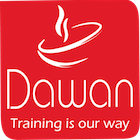Goals
- Understand the role of ITIL and its main concepts as part of a more general approach to piloting IT and IS in the company
- Going from an IS strategy to a service strategy
- Show the role of ITIL in the continuous improvement of the IT service vis-à-vis users and customers (Upgrade from V2 to V3)
Program
Presentation of ITIL
Presentation of the training
Principles
Example in a local authority
Role of the service strategy
IT context of the company
IT contributions
Good practices
History
Principles of the approach
The processes
The organization
The function and the role
Service life cycle
Key players in the IT service
Objectives of the collection of « Best practices »
The ITIL documentary repository
The stages of an ITIL project and the founding concepts
The architecture of the repositories of good practices
Complementarity ITIL and COBIT (Governance of IS)
IT service management principles and practices Service
strategy phase
Mission, utility and guarantee
Resources and skills
Business opportunity
Risks and governance
Strategy definition
process
Process activities Process and role of the manager
Key to the implementation of ITIL
Steps types of implementation
Conditions for success: communication
Duration
3 days
Price
£ 1908
Audience
IT directors, managers, system administrators, developers, all those concerned by IS
Prerequisites
Have minimal knowledge in IT, development, systems administration
Reference
GES314-F
Service Lifecycle Service
Strategy Service
Design Service
Transition Service
Operation
Continuous Service Improvement Service
Functions
Roles matrix (RACI)
Key roles
Service function / process relationship
Service center
Concepts and functions: from call center to service center
Activities
Architecture
Tools
Staff
Indicators
Business and technical services
Customer interfaces and support
Event management
Process overview
Objectives and activities
Roles of operators and operations manager
Links with incident management, points of vigilance
Access management
Security and availability procedures
Identity, rights and privilege management
Roles of the service center and of the access manager
Relations with the service center and security policy
Execution of requests
Requests, access requests, complaints
Registration, processing and closure
Roles of the service center and the request manager
Catalog of requests, self-help )
Incident management
Overview of the process
Overview of the main activities of detection to the closing
state services and Coding incidents
Compliance with service levels and reporting activities
Problem Management
Overview of the process
reactive and proactive activities
Typology: components, databases and data flows, equipment, etc.
CMDB model and level of granularity
Configuration management system (CMS)
Activities and actors
Vigilance points and risks
Business activity diagram
Missions and objectives
Production and consumption mechanism
Management of service levels
Synoptic and interweaving of service contracts (SLR, SLA, OLA, UC)
Objectives and activities
Role of the manager and customer relationship representative
Issues, benefits and implementation difficulties
ROI, TCO, cost, price and billing of a service
Recurring activities, service activities
Scope of the process
Iterative activities; specific activities
Benefits and points of vigilance
Availability measurement: availability rate, average recovery time, resilience
Availability management system (AMIS)
Benefits and points of vigilance
Terminology and objectives
Activities and actors
Benefits and points of vigilance
Confidentiality, integrity, authenticity, non-repudiation
Information security management system (ISMS)
Activities and actors
Risks and issues
Interfaces of ITIL with other standard IT repositories: Cobit, CMMI, ISO,…
Software life cycle and ITIL best practices
Challenges and benefits:
– More useful, more efficient and less expensive IT
– Precise terminology shared between all
Service life cycle
Collection of customer requirements
Definition of the solution
Tools
Processes
Service measurement indicators
Typology and service contracts
Management methods
Stakes in supplier management
Role of actors: purchasing, legal, manager
Objectives and process
Management of deployments and production
Goals and terminology Release
policy
Environments: development, approval, production
Actors and points of vigilance
Definition and objectives
Characteristics: normal, standard, urgent
Description of the process
Actors, escalation process and points of vigilance
Measurement indicators
From data to knowledge
Components of the Service Knowledge Management System (SKMS)
Objectives, activities and points of vigilance
Integration into the service life cycle
Presentation of the concept: Deming wheel
Objectives and activities
The 7 stages of continuous improvement
Content
Missions and activities
Preparation and passage of certification
Sessions
Contact us for more informations about session date
